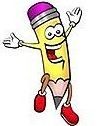By the time they are finished Kindergarten, children should be able to:
Number Sense / Place Value
- count verbally to 100 (using ones and tens)
- write and represent numbers to 20 and beyond
- count forward from a given number
- answer “How many?” by counting to at least 20
- count out objects to 20
- combine and separate numbers 11-19 into tens and ones
Basic Operations
- use the strategies of “counting on” and “counting up to” to find results
- represent addition and subtraction within 10 with objects
- make sets of 6-10 objects; identify which part has more, less or the same
Algebraic Thinking (Patterns and Relations)
- make algebraic generalizations, with assistance (e.g. subtracting zero from any number give that number, subtract a number from itself gives zero)
Measurement
- describe measureable attributes of objects (e.g. length, height, weight, volume, area)
- compare two objects directly
- apply ordinal numbers from 1st to 10th
- use measurement words and some standard tools accurately (e.g. ruler, measuring cups)
- compare two-dimensional (2D) and three-dimensional (3D) shapes in different sizes and orientations
- model shapes by building them from components
- combine simple shapes to make larger shapes (can use tangrams for this)
Data Analysis
- sort and classify objects into more than one category (e.g. size, colour, shape) and count the number of each
- rearrange objects into new categories
Geometry (Shapes)
- name shapes regardless of how they are shown (orientation)
- identify the difference between two-dimensional and three-dimensional shapes
- recognize shapes in the environment
Spatial Sense
- make and use simple sketches to locate objects
- use position words to describe objects correctly (e.g. in, out, below, above, beside, etc.)
